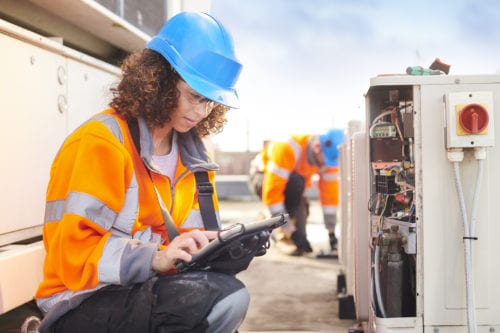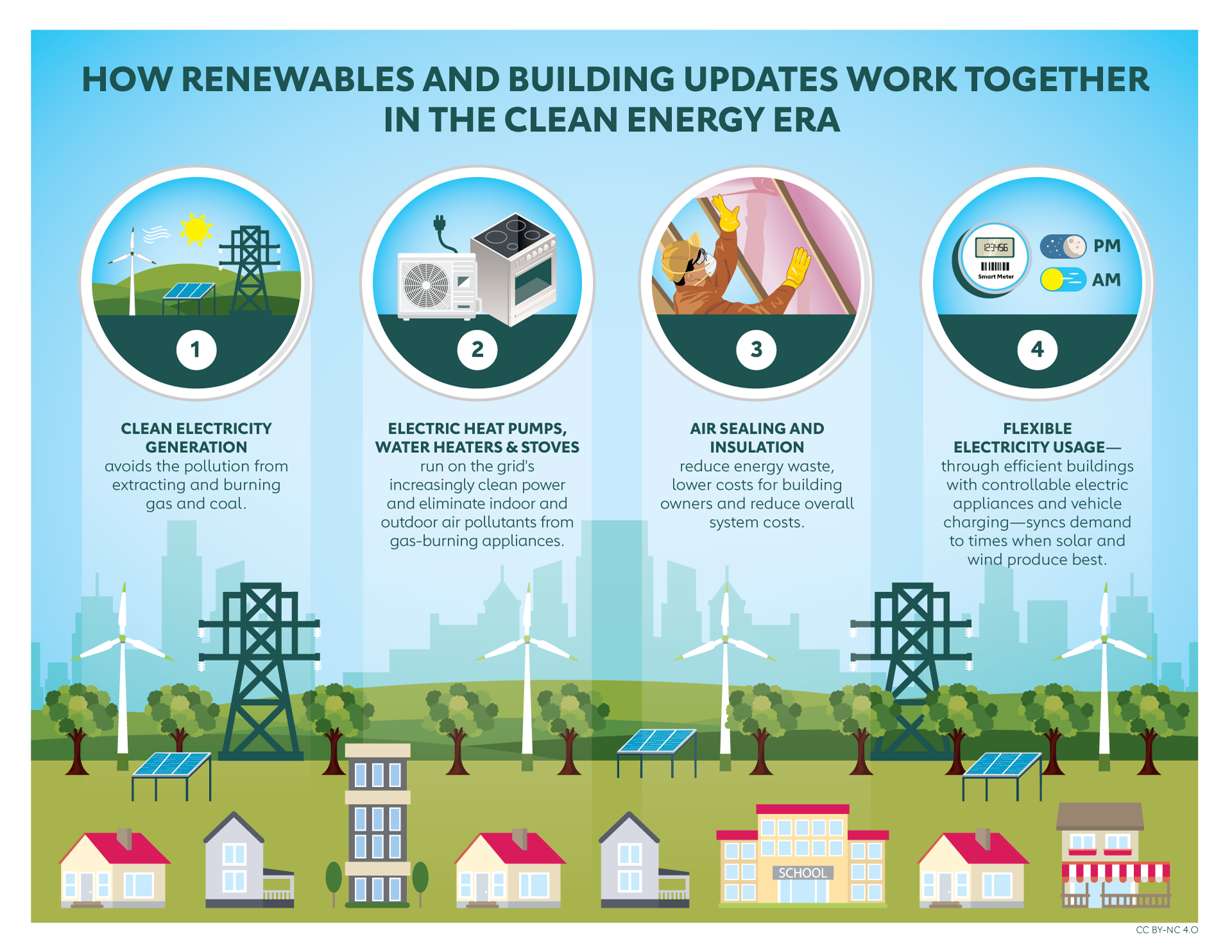rooftop air con installation

Building Electrification: Opportunities for Job Training while Sheltering in Place
Over the past several weeks, in order to fight the spread of the coronavirus, millions of Americans have been ordered to stay at home. Businesses across the United States have shut their doors, forcing more than 26 million Americans to file for unemployment benefits while they wait to get to the other side of this crisis.
Now national and local leaders are grappling with a key question: what happens when the economy reopens? While many state economies are on pause, legislated emissions reduction targets (and the threat of climate change) are not. States around the country are looking at the buildings sector—a significant source of emissions—as an important piece of the puzzle to tackle and an opportunity to develop a new workforce.
Virtual training opportunities present a timely option for local leaders amid current “stay-at-home” orders and several states have already taken the lead to create or shift training courses online. New York—the largest producer of direct building emissions in the United States—is the latest to step up and prioritize this sector specifically, recently announcing several exciting initiatives.
Skills Supply Gap as Building Electrification Demand Grows
Across the United States, the movement to replace fossil fuel-burning furnaces, water heaters, and cooking ranges with electric alternatives has gained significant traction, driven by city and state climate policies, a desire for cleaner and healthier buildings, and consumer economics.
Demand is growing for heat pumps, in particular, as consumers seek more energy-efficient technologies to heat their buildings and state and city governments address the need to slash emissions from the buildings sector. While heat pumps have been used for many years in buildings around the country, recent technology advances—especially in the area of cold climate heat pumps—have now made them a key solution in driving down buildings sector emissions.

As heat pump deployment goals come into play alongside increased consumer awareness and interest, however, there is a potential shortage in the supply of trained heat pump installers to meet this growing demand. The Northeast Energy Efficiency Partnership (NEEP), for example, found several installer-related market barriers for heat pumps, including the inability to find experienced contractors and installers, and a lack of familiarity with the technology among the Heating, Ventilation, and Air Conditioning (HVAC) community.
While government and utility investment in training energy efficiency and renewable energy professionals has grown to a fairly established state over the past decade, similar training for electrification technologies has lagged behind. There is an opportunity to fill this gap through heat pump training programs, and to do so in virtual environment. In fact, several states have already adapted to the new reality and have created new virtual training programs or are expanding existing training programs online.
Remote Training Available for Electrification Technologies
Just last week, in a COVID-19 response letter from the Department of Public Service (DPS) and New York State Energy Research and Development Authority (NYSERDA), New York announced its continued strong support for energy efficiency, clean energy, and heat pump communities – including enhanced workforce and contractor training and outreach while the workforce is idle.
Taking comments and input from over 800 participants on a joint DPS and NYSERDA webinar in March, New York doubled down on the need to develop the contractor base supporting the state’s building electrification goals, announcing that virtual trainings targeting the heat pump workforce would be expedited. Currently, at least 15 different heat pump related training courses appear on NYSERDA’s directory of free online clean energy training, but more are expected as NYSERDA pursues the actions listed in its letter.
In California, Pacific Gas & Electric (PG&E) has created an all-day training webinar focused on electric heat pumps for domestic space and water heating. The course covers ducted and ductless heat pump systems, interactions with indoor air quality issues, and unitary and split heat pump water heaters for both new construction and existing buildings. In addition to how the technology works, the course also covers the energy savings and emissions reduction potential of heat pumps so that installers can understand and discuss these benefits with building owners.
Efficiency Vermont has assembled a resource hub of on-demand, video-based training including an introduction to heat pump water heaters and proper installation techniques. After watching the training, contractors can take an online quiz to become members of the Efficiency Excellence Network in Vermont.
“We recognize partners are not always able to attend in-person trainings, so we are building up our online presence with more live webinars and pre-recorded resources so information can be accessed more quickly and easily at times that best suit their business,” said Matt Kilcoyne, Program Manager at Efficiency Vermont. “We learn just as much from our partners as they do from us, so offering a variety of ways to collaborate is critical to our shared goals of supporting our local economy while reducing energy costs and carbon emissions here in Vermont.”
Neighboring Maine is offering web-based heat pump basics and installation training, from selecting the right unit to siting considerations, through Efficiency Maine Trust. Some aspects of the course, such as program requirements for Efficiency Maine, are targeted specifically toward registered in-state heat pump vendors. Other elements, such as cold climate performance and protection from snow, are highly applicable to heat pump installers in other states and regions with similar climates.
While the above isn’t an exhaustive list, it highlights notable examples of virtual opportunities to increase knowledge around the benefits and installation techniques for heat pumps and other electrification technologies, and at no cost to local contractors and residents.
An Opportune Time to Prepare a New Workforce
Many states’ stay-at-home orders have extended into June, while others have emphasized re-opening will take a measured, phased approach. Social distancing requirements, necessary to prevent the spread of COVID-19, have meant that contractors and installers in many states have suspended all field and on-premises work, threatening jobs for efficiency providers, trade allies, and contractors.
While virtual training is not a cure-all, it is a solution that can be implemented quickly by providers and easily accessed by contractors at home. As society reopens and heads toward a new normal, workforce development initiatives will have to also ensure funding is available for electrification pilot projects, incentives, and low-cost financing schemes to kickstart the market once again.
In the meantime, this dry spell of work—while a difficult time for many—presents an opportunity to ensure workers are trained and ready to take on necessary jobs when the economy reopens. This period of collective hibernation can be seized as a window to build the workforce needed to meet the sizable demand for clean and healthy electric buildings across the United States.


